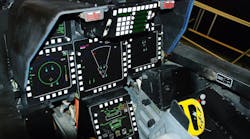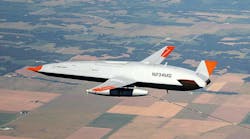If the recently published 9/11 Commission Report tells us anything, it tells us that technology is one solution in the nation's war on terrorism — but far from the only solution.
The report strongly suggests what many have learned from hard lessons: it's not the sophisticated sensors, signal processing, satellite communications, and automation technology that wins the day in the end; it's the people who use the technology that make the difference.
The so-called Final Report of the National Commission On Terrorist Attacks Upon The United States lays out in detail the events that led to the Sept. 11, 2001, terrorist attacks on the World Trade Center in New York, the Pentagon in Washington, and the foiled attack of a fourth jetliner in Western Pennsylvania.
Among the report's many conclusions: there's plenty of blame to go around for liberals as well as conservatives in the Clinton and Bush administrations. Everyone involved sincerely tried to bring technology to bear on the terrorist threat, and all failed in their attempts up to and including the Sept. 11 attacks.
As much as anything, the 9/11 Commission Report is about human mindsets — more specifically about how people step into patterns of thinking and analysis based on previous experience, and often blind themselves to the paradigm shifts that cry out for a whole new outlook.
As all major reports do, this document relies heavily on hindsight. By now we can all look back on what happened leading up to Sept. 11. Knowing what we do, it's reasonably clear what our leaders could have done to prevent the attacks. Our leaders, however, didn't have that luxury prior to 9/11.
We now know, for example, that U.S. intelligence officials relied far too heavily on electronic and optoelectronic technology to track the personnel and intentions of al Qaeda, the international terrorist organization headed by Osama bin Laden, the report points out.
We now know, in addition, that airport screeners with weapons-detection technology at their command simply did not consider the knives and box cutters with which 19 terrorists commandeered four large jetliners to be threats worth worrying about.
We also have come to know that FAA air traffic controllers and security experts with satisfactory — certainly not state-of-the-art — radar, communications, and computer networking technology did not entertain the notion that hijackers would use aircraft as guided missiles, until it was too late.
The technology itself, which many consider to be the United States's greatest advantage against all adversaries, is also suspect, the report states. Electronic and optoelectronic technologies are great enablers, but they can serve as blinders, as well.
Technology "is expensive, sometimes fails, and often can create problems as well as solve them," the report states. "Some of the advanced technologies that gave us insight into the closed-off territories of the Soviet Union during the Cold War are of limited use in identifying and tracking individual terrorists."
One of the chief weaknesses of technology-only approaches to anticipating and responding to terrorist moves involves the increasingly commercial nature of today's most advanced technologies.
For a decade now, Pentagon leaders have relied increasingly on commercial off-the-shelf technology, or COTS, and have employed COTS widely to the war on terror. What's available to us is available to the terrorists; it's that simple.
"Terrorists, in turn, have benefited from this same rapid deployment of communication technologies," the report states. "They simply could buy off the shelf and harvest the products of a $3 trillion a year telecommunications industry. They could acquire without great expense communication devices that were varied, global, instantaneous, complex, and encrypted."
The Internet and the World Wide Web also have provided advantages to the terrorists, every bit as much as these technologies have provided advantage to U.S. military and counter-terrorism forces in their strides toward "network-centric warfare."
"The emergence of the World Wide Web has given terrorists a much easier means of acquiring information and exercising command and control over their operations," the report points out. "The operational leader of the 9/11 conspiracy, Mohamed Atta, went online from Hamburg, Germany, to research U.S. flight schools. Targets of intelligence collection have become more sophisticated. These changes have made surveillance and threat warning more difficult."
An over-reliance on technology over the years slackened institutional respect for what is perhaps the cornerstone of all intelligence-gathering means — the role of the human agent who watches, infiltrates, and reports to higher authorities, the report suggests.
Since the 1970s, not only have U.S. intelligence agencies been systematically partitioned, fragmented, and limited in response to perceived agency excesses during and after the Vietnam War, but the incentives to pursue and manage human intelligence projects within the agencies have been few and far between.
"After the Watergate era, Congress established oversight committees to ensure that the CIA did not undertake covert action contrary to basic American law," the report states. "UControversies surrounding Central American covert action programs in the mid-1980s led to the indictment of several senior officers of the Clandestine Service."
The rewards and the avenues for enhancement within the intelligence agencies by the time of 9/11 involved data processing, diplomacy, and management, but certainly not in the pursuit of human intelligence.
"The nadir for the Clandestine Service was in 1995 when only 25 trainees became new officers," the report states. "In 1998, the DCI [Director of Central Intelligence] was able to persuade the administration and the Congress to endorse a long-range rebuilding program. It takes five to seven years of training, language study, and experience to bring a recruit up to full performance."
The clear message here is the most important component of U.S. worldwide intelligence gathering was gutted and unready when it was most needed.
There is a balance that is badly needed in the way Americans — from the president and intelligence leaders all the way down to the man in the street — need to consider intelligence gathering as we move forward in the War on Terrorism. Technology is not the only answer.
"Despite the problems that technology creates, Americans' love affair with it leads them to also regard it as the solution," the report states. "But technology produces its best results when an organization has the doctrine, structure, and incentives to exploit it."


